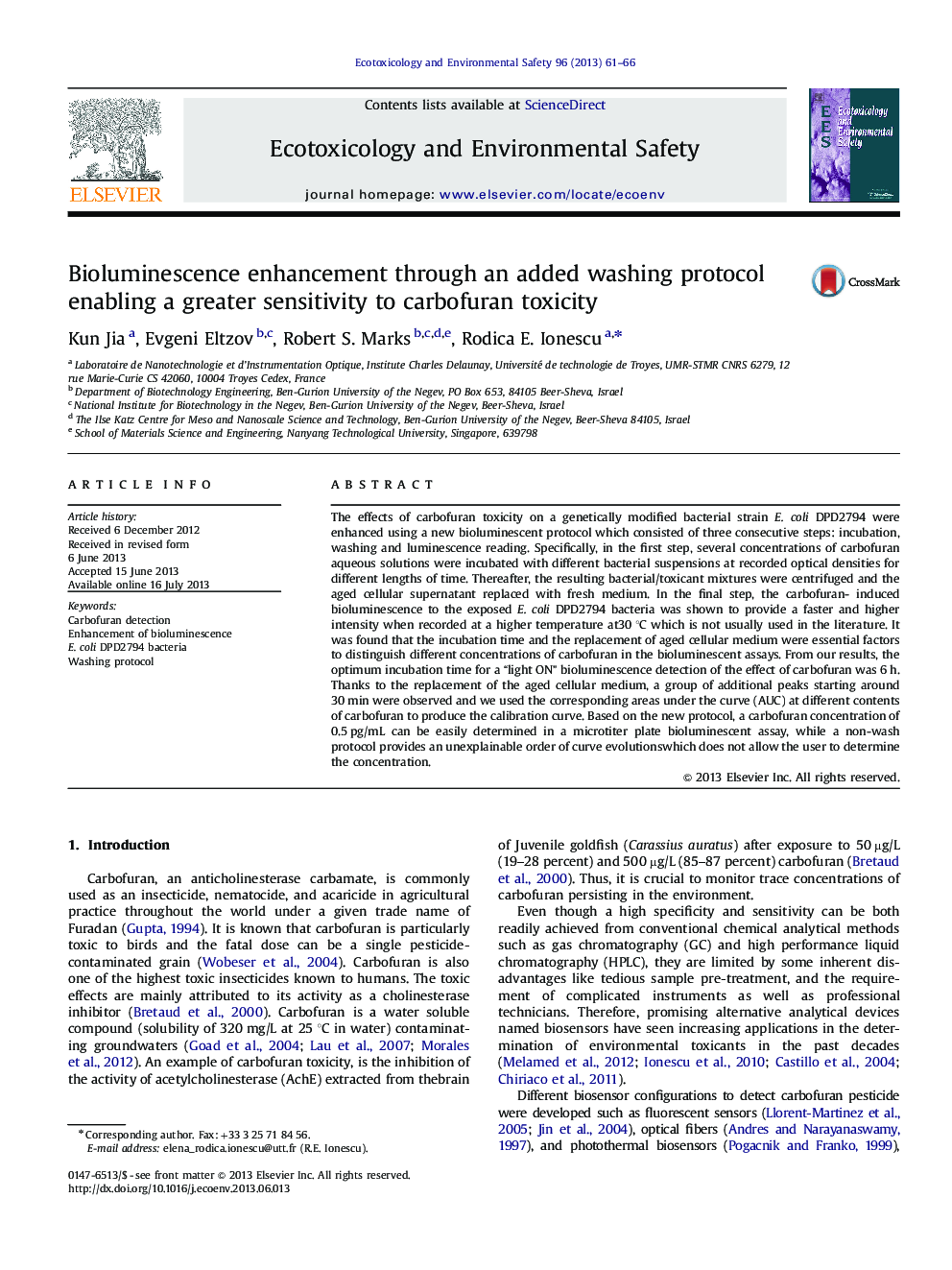| Article ID | Journal | Published Year | Pages | File Type |
|---|---|---|---|---|
| 6312327 | Ecotoxicology and Environmental Safety | 2013 | 6 Pages |
â¢Anoriginal protocol forincreased carbofuran toxicity detection.â¢The protocol is based on washing bacteria with fresh LB medium.â¢It was found that the toxicant bioluminescence signal wasstrongly enhanced.â¢A detection limit of 0.5 pg/mL carbofuran is recorded after the bioluminescent tests.
The effects of carbofuran toxicity on a genetically modified bacterial strain E. coli DPD2794 were enhanced using a new bioluminescent protocol which consisted of three consecutive steps: incubation, washing and luminescence reading. Specifically, in the first step, several concentrations of carbofuran aqueous solutions were incubated with different bacterial suspensions at recorded optical densities for different lengths of time. Thereafter, the resulting bacterial/toxicant mixtures were centrifuged and the aged cellular supernatant replaced with fresh medium. In the final step, the carbofuran- induced bioluminescence to the exposed E. coli DPD2794 bacteria was shown to provide a faster and higher intensity when recorded at a higher temperature at30 °C which is not usually used in the literature. It was found that the incubation time and the replacement of aged cellular medium were essential factors to distinguish different concentrations of carbofuran in the bioluminescent assays. From our results, the optimum incubation time for a “light ON” bioluminescence detection of the effect of carbofuran was 6 h. Thanks to the replacement of the aged cellular medium, a group of additional peaks starting around 30 min were observed and we used the corresponding areas under the curve (AUC) at different contents of carbofuran to produce the calibration curve. Based on the new protocol, a carbofuran concentration of 0.5 pg/mL can be easily determined in a microtiter plate bioluminescent assay, while a non-wash protocol provides an unexplainable order of curve evolutionswhich does not allow the user to determine the concentration.
